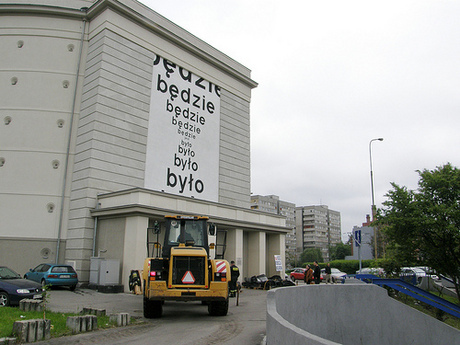Bunkers of Wroclaw
Previously a part of German territory, Wroclaw (then called Breslau) played a large part in the German defense against the Soviets, particularly in the great siege of 1945. To protect themselves the Germans built a series of under- and overground bunkers which are still standing in Wroclaw today. While many of these structures are currently standing empty, the City of Wroclaw has great plans for converting the shelters for practical and cultural purposes.
Recently announced was the conversion and renovation of the huge bunker on the corner of ul. Stalowa and ul. Grabiszynska. The plan is to modernize the bunker adding three stories, however the general look will certainly remain as it is considered a historical artifact. In two years, this bunker will be the new home of a collection of valuable archives.
Other plans for Wroclaw's shelters include the creation of the Theatre Puppets Museum below Plac Solny, a former German hospital. An underground bunker beneath Plac Nowy Targ is also planned to be an underground parking for 720 cars. Another idea, though still just a rumour, is the creation of a Festung Breslau (Wroclaw Fortress) museum in the place of a former field hospital beneath Plac Strzegomski.
Several bunkers are found in Wroclaw. They were built in the 19th century or later. Parts of them were built during Word War II, and formed an integral element of Festung Breslau (Fortress Wroclaw). After the war the process of liquidating German defences was begun – which usually involved blowing them up. Sometimes munitions intended for disposal were placed inside. A free-standing cylindrical shelter is located on Legnicka Street near Plac Strzegomski. It has reinforced concrete walls 1.1 m thick, while its ceiling is 25 m in height and one and a half metres thick. The shelter in Slowiański Street at Olbiński is similar in construction, though significantly smaller.
Another facility performing a military function in Wroclaw was Wzgorze Partyzantow (Partisan Hill). Although only a shadow of its former grandeur has survived, it is still worth seeing. Its WWII observation tower and command post are still intact. If you’re walking along ul. Ks. Skargi it’s impossible to miss the white crescent-shaped structure rising by Most Skargi. Wzgórze Partyzantów (Partisan Hill) is one of the few remaining ancient fortifications that once protected the Old Town from invasion. Built between 1594 and 1598, and originally awarded the name Bastion Sakwowy (Saddlebag Bastion), the buildings you see now topping the horizon date from the 19th century when the area was redeveloped to serve as public recreational space. A fearsome tower, designed by Berlin architect Carl Schmidt was added in 1867, though this was demolished during WWII to prevent advancing Russian troops from using it as a reference point for artillery shelling. At the start of the siege of Festung Breslau the subterranean bunkers and catacombs were used as HQ by Nazi high command, though they relocated in March 1945 as the Red Army drew closer. After the war the hillock was re-christened Partisan Hill and the old cellars temporarily housed a museum. Today much of the area lies forlorn and forgotten, a once gleaming construction littered with smashed bottles and spray can squiggles, though recent restoration hints at better times. The windswept loneliness that greets visitors is ripe for myth and legend, and stories of secret Nazi tunnels and the ghostly shrieks of prisoners tortured to death in medieval times abound.



